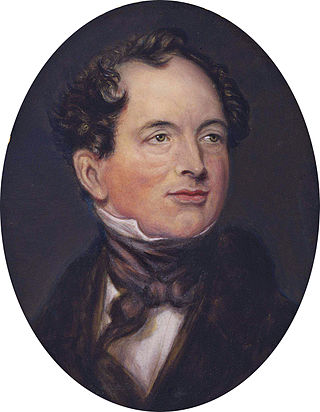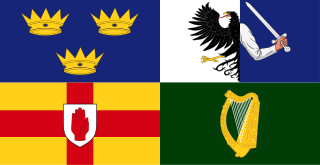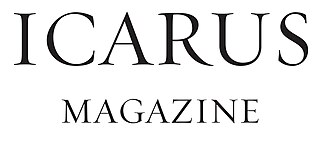Related Research Articles

William Butler Yeats was an Irish poet, dramatist and writer, and one of the foremost figures of 20th-century literature. He was a driving force behind the Irish Literary Revival, and along with Lady Gregory founded the Abbey Theatre, serving as its chief during its early years. He was awarded the 1923 Nobel Prize in Literature, and later served two terms as a Senator of the Irish Free State.

Thomas Moore, also known as Tom Moore, was an Irish writer, poet, and lyricist celebrated for his Irish Melodies. His setting of English-language verse to old Irish tunes marked the transition in popular Irish culture from Irish to English. Politically, Moore was recognised in England as a press, or "squib", writer for the aristocratic Whigs; in Ireland he was accounted a Catholic patriot.

Irish literature is literature written in the Irish, Latin, English and Scots languages on the island of Ireland. The earliest recorded Irish writing dates from back in the 7th century and was produced by monks writing in both Latin and Early Irish, including religious texts, poetry and mythological tales. There is a large surviving body of Irish mythological writing, including tales such as The Táin and Mad King Sweeny.
Thomas MacGreevy was a pivotal figure in the history of Irish literary modernism. A poet, he was also director of the National Gallery of Ireland from 1950 to 1963 and served on the first Irish Arts Council.
Blánaid Salkeld was an Irish poet, dramatist, actor, and publisher, whose well-known literary salon was attended by, among others, Patrick Kavanagh and Flann O'Brien.

The history of Irish theatre begins in the Middle Ages and was for a long time confined to the courts of the Gaelic and "Old English" – descendants of 12th-century Norman invaders – inhabitants of Ireland. The first theatre building in Ireland was the Werburgh Street Theatre, founded in 1637, followed by the Smock Alley Theatre in 1662.

The Gaelic revival was the late-nineteenth-century national revival of interest in the Irish language and Irish Gaelic culture. Irish had diminished as a spoken tongue, remaining the main daily language only in isolated rural areas, with English having become the dominant language in the majority of Ireland.

Thomas Stanislaus MacDonagh was an Irish political activist, poet, playwright, educationalist and revolutionary leader. He was one of the seven leaders of the Easter Rising of 1916, a signatory of the Proclamation of the Irish Republic and Commandant of the 2nd Battalion, Dublin Brigade of the Irish Volunteers, which fought in Jacob's biscuit factory. He was executed for his part in the Rising at the age of thirty-eight.
The Lace Curtain was an occasional literary magazine founded and edited by Michael Smith and Trevor Joyce under their New Writers Press imprint. Both press and journal were dedicated to expanding the horizons of Irish poetry by rediscovering a native modernist tradition, publishing younger Irish poets who were working in modes that sat outside the mainstream and introducing innovative non-Irish writing to an Irish audience.
The Irish Literary Revival was a flowering of Irish literary talent in the late 19th and early 20th century. It includes works of poetry, music, art, and literature.

Thomas Crofton Croker was an Irish antiquary, best known for his Fairy Legends and Traditions of the South of Ireland (1825–1828), and who also showed considerable interest in Irish song and music.
Thomas F. Kilroy was an Irish playwright and novelist.
Robert Yelverton Tyrrell, FBA was an Irish classical scholar who was Regius Professor of Greek at Trinity College, Dublin.

John Jordan (1930–1988) was an Irish poet and short-story writer.

Icarus is a student literary magazine based in Trinity College Dublin, publishing work by students, alumni and staff of the university. The magazine is the earliest-founded arts publication still extant in Ireland.

The Bell was an Irish monthly magazine of literature and social comment.

Daly's Club, with premises known as Daly's Club House, was a gentlemen's club in Dublin, Ireland, a centre of social and political life between its origins in about 1750 and its end in 1823.

The following is a timeline of the history of the city of Dublin, Ireland.

The Klaxon: An Irish International Quarterly was an avant-garde literary magazine of literature, art, and criticism published in Dublin. The magazine ran for a single issue between 1923-1924. It was created and edited by A.J. "Con" Leventhal. Leventhal decided to start the magazine after his review of Ulysses was rejected by Seumas O'Sullivan's The Dublin Magazine on account of the printers' refusal to publish a positive review of James Joyce. Among its contributors were Thomas MacGreevy, Francis Stuart, F.R. Higgins, and Cecil Ffrench Salkeld.
References
- ↑ Boylan, Henry (1998). A Dictionary of Irish Biography, 3rd Edition. Dublin: Gill and MacMillan. ISBN 0-7171-2945-4.
![]() This article incorporates text from a publication now in the public domain : Herbermann, Charles, ed. (1913). "Periodical Literature". Catholic Encyclopedia . New York: Robert Appleton Company.
This article incorporates text from a publication now in the public domain : Herbermann, Charles, ed. (1913). "Periodical Literature". Catholic Encyclopedia . New York: Robert Appleton Company.